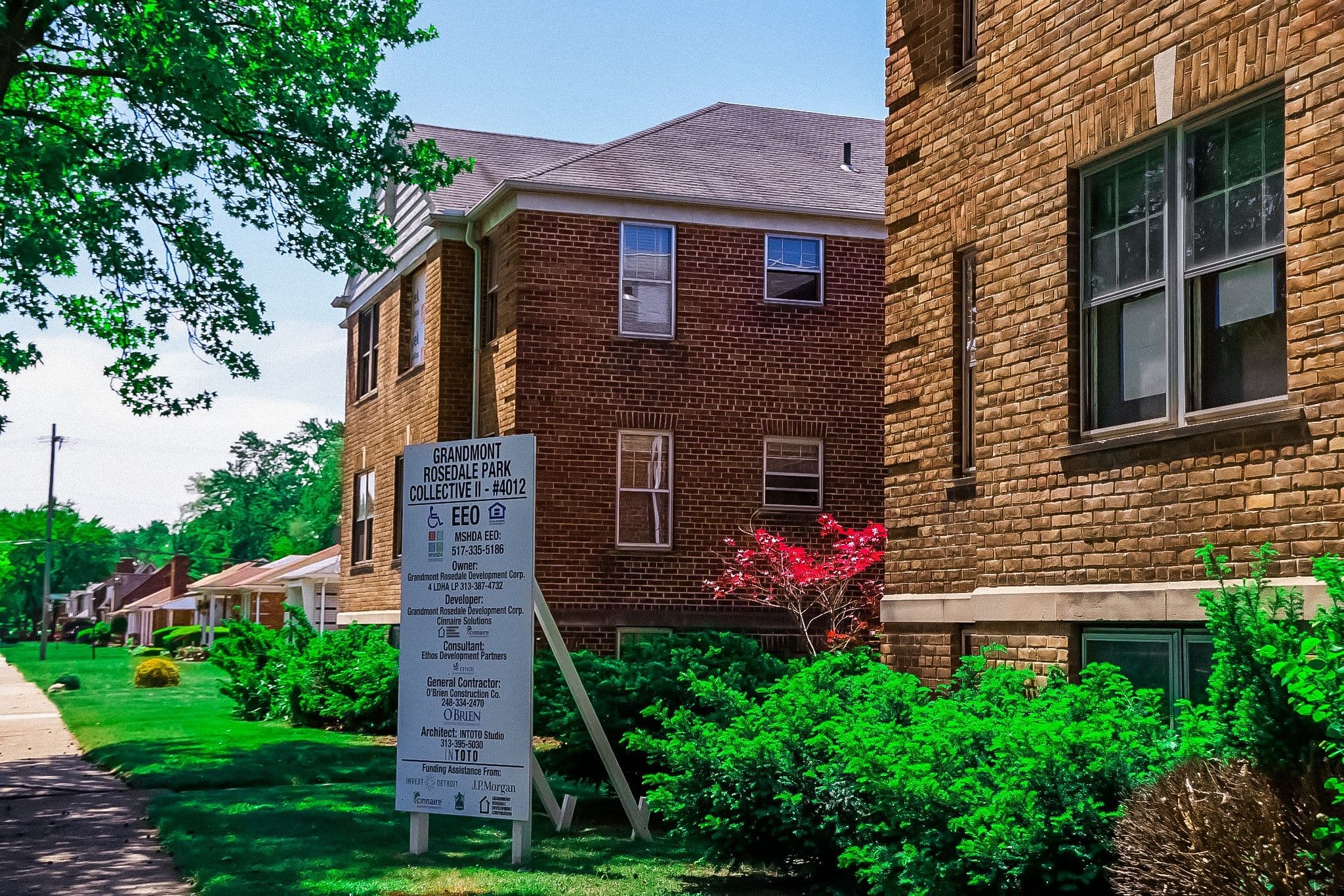State of Michigan
Housing Data Portal
The Michigan Housing Data Portal provides easily accessible housing, demographic and economic data to help community members and housing stakeholders across the state understand key local trends, compare these trends to other geographies, and create detailed reports.


Monitor markets and specific geographies to advance equitable housing access and promote data-informed conversations about critical trends.

Serve as a centralized repository of critical housing and community data to help developers and communities understand local housing needs and opportunities.

Visualize Michigan’s progress towards the Statewide Housing Plan goals.
Meeting Statewide Housing Goals
Housing is the foundation of thriving communities, and everyone deserves safe, affordable, and quality housing. Yet according to the Michigan Statewide Housing Needs Assessment, about 50% of Michigan’s renters, and 25% of its homeowners, pay too much for housing.
To work to address these complex, intersecting challenges, Michigan’s Statewide Housing Plan established five statewide housing targets. The following charts and figures highlight important measures related to meeting these targets.
To learn more about these targets, please visit: Michigan Statewide Housing Plan Webpage

Image Source: Michigan State Housing Development Authority
Is Michigan Meeting Its Housing Supply Goals?
An “adequate” housing supply provides enough new homes to accommodate the formation of new households as existing residents form new households together or new households move into the community, and to support the workforce that drives the local economy. New housing supply has not kept up with job growth in Michigan. In 2021 just 430 new homes were permitted for every 1,000 jobs added within Michigan. In addition, vacancy rates declined from 4.2% to 1.9% statewide from 2011 through 2021, well below a healthy vacancy rate of 5%. This indicates that as the economy grows in parts of the state, new workers and existing residents are competing for an increasingly limited supply of homes.
Allowing the number of homes to grow to match demand for homes is the foundation, and a prerequisite, for creating an affordable housing market and an equitable local economy. A healthy housing market - one in which the market meets the vast majority of existing and new households' needs for safe, quality homes - will include an increase in the number of homes that is responsive to demand across different housing types and price points. If not enough homes are added to accommodate growth, then both rents and home prices will face upward bidding pressure as households compete for an insufficient supply of housing.
Constrained housing supply leads to competition for existing homes which drives the increase in the cost of rental and for-sale homes and can displace low- and moderate-income residents from their communities.
The following indicators can help you understand key housing supply trends in Michigan.
Regional Comparison of Homes Permitted Per 1,000 Jobs Created, 10-Year Average
On average between 2012 to 2022 in Michigan, 494 homes were permitted per 1,000 jobs created.
The number of homes permitted per 1,000 jobs created can help you assess the responsiveness of housing supply to economic growth. When the number of jobs created significantly exceeds the number of homes permitted, the new demand for homes will start to exceed new supply, driving prices up.

Sources: Calculated based on data from Bureau of Labor Statistics (BLS); Building Permit Survey, US Census Bureau; and HR&A Analysis
Change in Vacant and Available Homes
In 2021, out of all homes in the market, only 1.9% of homes were vacant and available for rent or for sale.
Not all “vacant” homes are available to occupy because some are in need of repair, are in foreclosure or are used as seasonal homes. The vacancy rate of for-sale vacant homes and for-rent vacant homes—or homes that are truly available to occupy— helps indicate how constrained the housing market is. A healthy vacancy and availability rate varies by market, but 5% is traditionally considered a healthy rate.

Sources: American Community Survey (ACS), US Census Bureau
Change in Inventory by Building Typology
Single family homes made up the largest share of homes in Michigan in 2021: 3.2 million homes (72%), compared to 1 million (23%) homes in multifamily buildings with 5 or more units.
The change in typology provides insight into how many homes are built and of which type. This should be compared with the number of jobs being added in the market and the demographics (age, size, etc.) of households being added to understand if new housing types align with demand.

Sources: American Community Survey (ACS), US Census Bureau
Change in Share of Single Family Owner Occupied and Single Family Rental Homes
From 2011 to 2021, the share of renters living in single family homes increased by 12.5%.
The respective share of rental and owner-occupied homes that are single-family can help you understand if single-family homes are shifting from homeownership to rental. Further, when compared to data on new construction, it can help you understand how the housing market is creating homes to support homeownership compared to rental opportunities. If the single-family rental rate is rising, it can be an indicator that barriers to homeownership access are rising, that there is a lack of new multifamily homes, or that single family homes are more attractive to renters because of the size, location or price point of those homes.

Source: Public Use Microdata Sample (PUMS), American Community Survey
Rental Homes by Affordability
In 2021, 62% of rental homes with cash rents were affordable to households earning less than 60% of Area Median Income in their specific region. This was higher than the US average, at 49%.
Both income restricted and non-restricted homes affordable to households making less than 60% of Area Median Income make up the inventory of affordable homes in a community. Some homes are affordable because they receive public subsidy and are income restricted, and others are affordable because of factors like age, size and quality but not income restricted (naturally occurring affordable housing, or NOAH).

Source: Public Use Microdata Sample (PUMS), US Census Bureau, Michigan State Housing and Development Authority (MSHDA)
Regional Affordable Units Comparison
There was a greater instance of Naturally Occurring Affordable Housing (NOAH) in Michigan than in the US overall. In 2021, while the share of NOAH in the United States was 36%, in Michigan it was 47.3% of the total occupied rental housing stock.
The majority of homes affordable to households earning less than 60% of Area Median Income are NOAH in Michigan. Because they are not income-restricted, NOAH homes are at risk of becoming unaffordable to moderate income households if rents are rising in the community, indicating an opportunity for preservation.

Source: Public Use Microdata Sample (PUMS), US Census Bureau
